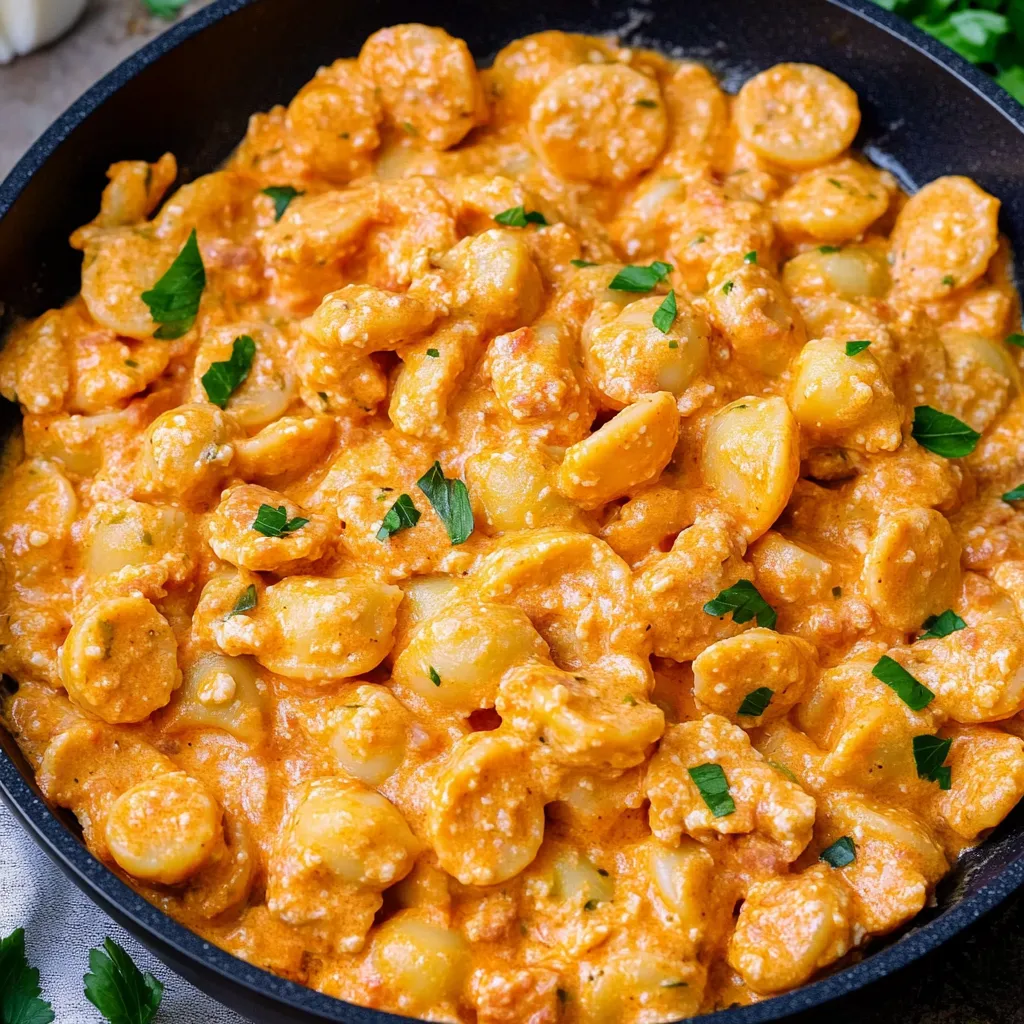 Pin it
Pin it
This cottage cheese pasta sauce transforms ordinary pasta into a protein-packed feast that satisfies both your cravings and nutritional needs. The creamy, herb-infused sauce wraps around your favorite pasta, creating a comforting dish that delivers an impressive 34 grams of protein per serving. Unlike typical "diet food" high-protein options, this recipe maintains all the rich flavors of traditional Italian cooking while supporting your fitness goals.
I stumbled upon this recipe during my post-workout hunger crisis last winter. After a particularly grueling strength session, I needed something substantial but didn't want to sabotage my efforts with empty calories. This sauce was a revelation—creamy, savory, and completely satisfying. My husband couldn't believe it contained cottage cheese and has requested it weekly ever since.
Essential Ingredients
- Cottage cheese: The protein powerhouse of this dish. Select small curd varieties for the smoothest blending results. Both regular and fat-free work wonderfully, allowing you to customize based on your nutritional goals.
- Tomato sauce (passata): Look for passata with no added sugars for the cleanest flavor. The naturally sweet tomatoes create perfect balance when they meld with the tangy cottage cheese.
- Fresh basil: Never substitute dried here! Fresh basil's aromatic oils release during blending, infusing the sauce with authentic Italian character that dried simply cannot replicate.
- Onion and garlic: The foundational flavor builders that create depth. For best results, sauté until translucent but not browned to maintain their sweet qualities.
- Turkey sausage: Offers lean protein with built-in seasoning. Choose varieties with visible herbs and spices for maximum flavor impact with minimal added fat.
- Parmesan cheese: Invest in real Parmigiano-Reggiano and grate it yourself. The complex, nutty notes elevate the entire dish beyond ordinary pasta.
- High-protein pasta: Chickpea, lentil, or protein-enriched varieties multiply the nutritional benefits. Look for options containing at least 10g protein per 2oz serving.
Step-by-Step Cooking Instructions
- Prepare your pasta foundation -
- Bring a large pot of water to a rolling boil. Add a generous tablespoon of salt—this is your only opportunity to season the pasta itself. Cook according to package directions, stirring occasionally to prevent sticking. Before draining, capture at least 1 cup of starchy pasta water in a measuring cup—this liquid gold will help your sauce cling perfectly to the pasta.
- Create your silky sauce base -
- In a high-powered blender, combine 2 cups cottage cheese with 1½ cups tomato passata and a large handful of fresh basil leaves. Blend on high speed for 60-90 seconds until completely smooth with no visible cottage cheese curds. The mixture should have a velvety consistency similar to a traditional cream sauce.
- Develop the flavor foundation -
- Heat 2 tablespoons olive oil in a large, deep skillet over medium heat. Add ½ cup finely diced onion and sauté for 4-5 minutes until translucent and fragrant. Add 3 minced garlic cloves and cook for 30 seconds more until the garlic releases its aroma but doesn't brown, which would create bitterness.
- Brown your protein component -
- Remove turkey sausage from casings if necessary and crumble directly into the skillet with the aromatics. Break apart with a wooden spoon while cooking for 6-8 minutes until completely browned with no pink remaining. The caramelization that occurs during this step creates essential depth of flavor.
- Marry the components -
- Reduce heat to medium-low and pour your blended cottage cheese mixture into the skillet. Stir continuously for 2-3 minutes to incorporate all the browned bits from the bottom of the pan. Allow the sauce to simmer gently for 5 minutes, adjusting thickness with reserved pasta water if needed—aim for a coating consistency that will cling to pasta without being too thick or too runny.
- Complete the dish -
- Add drained pasta directly to the sauce, along with ¼ cup freshly grated Parmesan and 2 tablespoons chopped fresh parsley. Toss everything together using tongs, gradually adding splashes of reserved pasta water to create a glossy, cohesive sauce that perfectly coats each pasta strand. The starch in the pasta water acts as a natural emulsifier, creating restaurant-quality results.
 Pin it
Pin it
The Protein Powerhouse Advantage
The humble cottage cheese remains one of the most underrated protein sources in our kitchens. While many fitness enthusiasts focus on protein powders and supplements, this traditional dairy product delivers complete protein with all essential amino acids.
Beyond just being protein-rich, cottage cheese offers significant calcium content that supports bone health—particularly important for anyone engaging in regular strength training. The combination of protein and calcium makes this sauce especially valuable for athletic recovery.
The versatility of cottage cheese extends far beyond this pasta sauce. After discovering how beautifully it blends into creamy sauces, I began incorporating it into everything from morning smoothies to savory dips. My teenage son, typically suspicious of "healthy" substitutions, now specifically requests my cottage cheese mac and cheese variation.
Cottage Cheese: The Unsung Kitchen Hero
Cottage cheese has enjoyed various popularity waves throughout culinary history. In the 1970s, it was a diet staple before falling out of favor. Today's renewed interest comes from understanding its impressive nutritional profile rather than viewing it as simply a low-calorie food.
What makes cottage cheese unique among dairy products is its production method—it's made from the curds of pasteurized milk, creating that distinctive texture. The minimal processing preserves more of milk's natural nutrients compared to many other cheese varieties.
In my family, cottage cheese has sparked a friendly competition of recipe experimentation. My daughter created a high-protein cheesecake using blended cottage cheese that rivals any traditional version, while my husband perfected cottage cheese pancakes for our Sunday brunches.
My personal favorite discovery came when experimenting with different cottage cheese brands. After trying nearly every variety available, I found the 4% milkfat versions produced the creamiest sauce with the richest mouthfeel. For family dinners, I always opt for this version, saving the fat-free alternatives for times when I'm strictly tracking macros.
After years of refining pasta recipes in my home kitchen, this cottage cheese variation has become my signature dish. What began as an experiment in protein-boosting has evolved into a celebration of flavor that honors traditional Italian cooking while embracing modern nutritional knowledge. The true test of any "healthy" recipe is whether it stands on its taste merits alone—and this one passes with flying colors every single time.
Frequently Asked Questions
- → Can I use regular pasta instead of chickpea pasta?
- Yes, you can use any pasta you prefer. Chickpea pasta just adds extra protein and fiber, but regular pasta works perfectly fine.
- → Is there a vegetarian version of this recipe?
- Definitely! Skip the turkey sausage and add sautéed mushrooms, bell peppers, or plant-based sausage instead.
- → Can I make this ahead of time?
- You can make the sauce ahead and refrigerate for up to 2 days. Cook the pasta fresh when ready to serve, then combine.
- → My sauce seems too thick. What should I do?
- Use the reserved pasta water to thin the sauce until you reach your desired consistency. Add a little at a time.
- → What can I serve with this pasta dish?
- A simple green salad or roasted vegetables make great sides. Garlic bread is also delicious for soaking up extra sauce.
